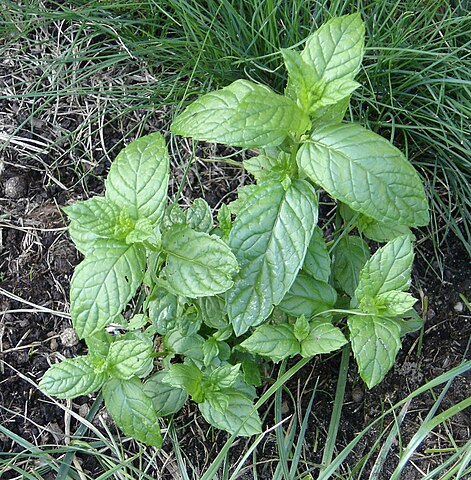
Mentha spicata, wikimedia commons
Mint is a perennial herb that spreads easily and was highly valued by the Europeans as a flavoring and a medicinal. Mentha canadiensis was native to North America, and was prized by the Native Americans as a medicinal plant useful in many preparations including insect repellent.
Some species of Mint (Mentha) were probably not native to North America, and it is mentioned as being part of the gardens of the Mayflower Pilgrims in Massachusetts, so it is possible that native species and European species were both grown in the gardens of the settlement. It is also possible that various plants were traded by the Native Americans and the Europeans for use in the gardens of both cultures.
See a detailed article on the archeology of plant life in New Amsterdam by Joel Grossman, PhD. here. Courtesy of the Holland Society of New York.
Adriaen van der Donck's ' Description of New Netherland' lists several plants as part of the standard medicinal garden.
"The herb garden is also tolerably well supplied with rosemary,
lavender, hyssop, thyme, sage, marjoram, balm, holy onions,
{ajuin heyiig,) wormwood, belury, chives, and clary; also,
pimpernel, dragon’s blood, five-finger, tarragon, (or dragons-
wort,) &c. together with laurel, artichokes, and asparagus,
and -various other things on which I have bestowed no
attention." https://www.loc.gov/resource/gdclccn.01015857/?sp=62&st=text&r=0.059,0…;

